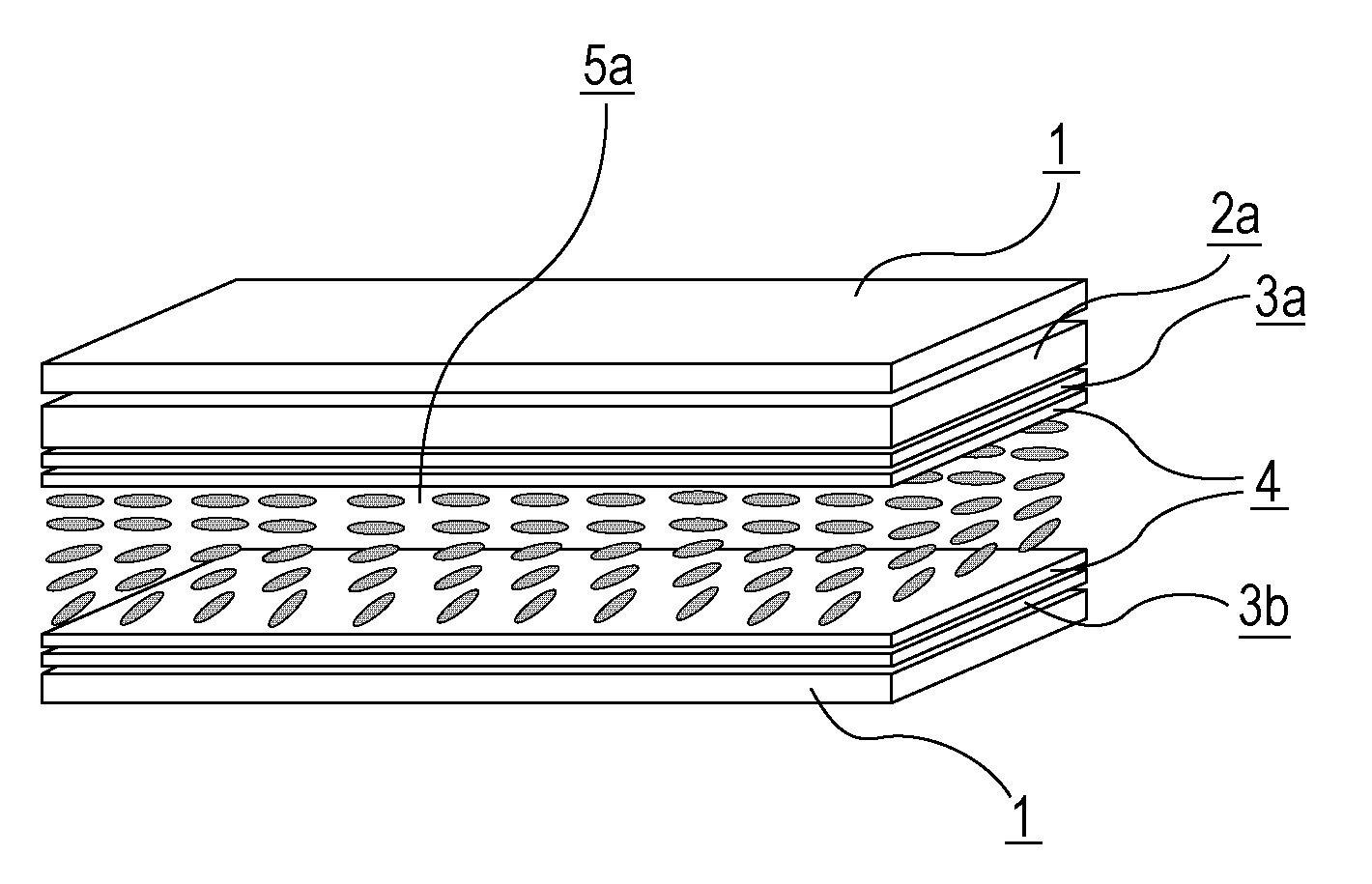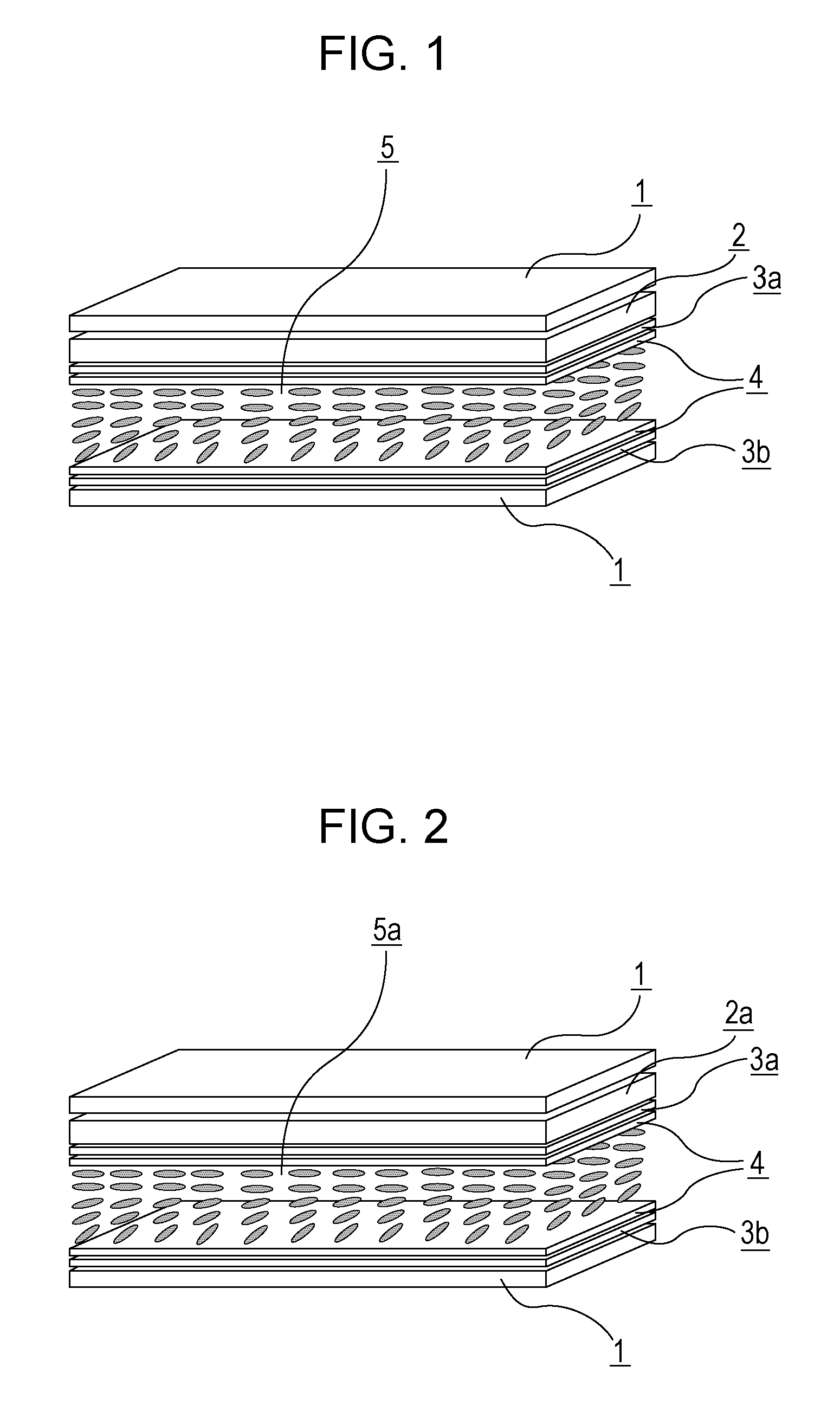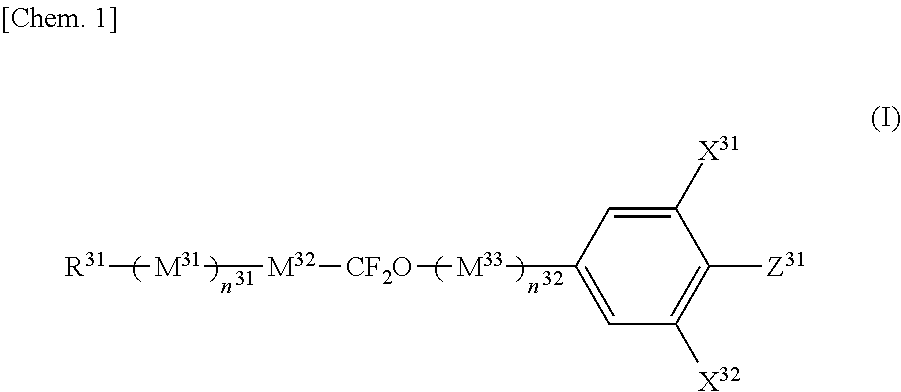Liquid crystal display device
a liquid crystal display and display device technology, applied in the direction of liquid crystal compositions, instruments, chemistry apparatus and processes, etc., can solve the problems of low direct effect of liquid crystal layer on the liquid crystal layer, low voltage holding ratio, and high impurity control levels of liquid crystal materials constituting such liquid crystal layers, etc., to achieve display defects such as white streaks, increase the ion density, and reduce the voltage holding ratio
- Summary
- Abstract
- Description
- Claims
- Application Information
AI Technical Summary
Benefits of technology
Problems solved by technology
Method used
Image
Examples
examples
[0197]Hereinafter, the present invention will be described further in detail with reference to Examples, but the present invention is not limited to these Examples. In compositions of Examples and Comparative Examples below, “%” means “% by mass”.
[0198]In Examples, the measured properties are as follows.
[0199]Tni: nematic phase-isotropic liquid phase transition temperature (° C.)
[0200]Δn: refractive index anisotropy at 25° C.
[0201]Δ∈: dielectric anisotropy at 25° C.
[0202]η: viscosity (mPa·s) at 20° C.
[0203]γ1: rotational viscosity (mPa·s) at 25° C.
[0204]VHR: voltage holding ratio (%) at 70° C.
[0205](a value, which is expressed as a percentage, of the ratio of a measured voltage to an initial applied voltage, the measured voltage being obtained by injecting a liquid crystal composition into a cell having a thickness of 3.5 μm and performing measurement at an application voltage of 5 V, a frame time of 200 ms, and a pulse duration of 64 μs)
[0206]ID: ion density (pC / cm2) at 70° C.
[0207...
examples 1 to 4
[0244]An electrode structure was formed on at least one of first and second substrates, and an alignment film having a horizontal alignment property was formed on each of surfaces of the first and second substrates facing each other. Then, a weak rubbing treatment was performed, an IPS cell was made, and a liquid crystal composition 1 described below was sandwiched between the first substrate and the second substrate. Table 11 shows the physical properties of the liquid crystal composition 1. Subsequently, liquid crystal display devices of Examples 1 to 4 were produced using the color filters 1 to 4 listed in Table 9 (dgap=4.0 μm, alignment film AL-1051). The VHR and ID of the produced liquid crystal display devices were measured. The image sticking of the produced liquid crystal display devices was also evaluated. Table 12 shows the results.
[0245]
[Chem. 24]Chemical structureProportionAbbreviation48% 3-Cy—Cy-1d04%3-Cy—Cy-1d18%1-Ph—Ph-3d15%3-Cy—Ph—Ph-25%2-Ph—Ph1—Ph-32%3-Ph—Ph3—CFFO—P...
examples 5 to 12
[0250]Liquid crystal compositions 2 and 3 listed in Table 13 were sandwiched as in Example 1. Liquid crystal display devices of Examples 5 to 12 were produced using the color filters listed in Table 9 and the VHR and ID were measured. The image sticking of the liquid crystal display devices was also evaluated. Tables 14 and 15 show the results.
[0251]
TABLE 13Name of compoundContent (%)Liquid crystal composition 24-Cy-Cy-1d0150d1-Cy-Cy-Ph-140d3-Cy-Cy-Ph-1143-Cy-Ph—Ph-Cy-333-Cy-Ph—Ph1-Cy-341-Cy-Cy-Ph3—F92-Cy-Ph—Ph3—F103-Cy-Ph—Ph3—F105-Cy-Ph—Ph3—F50d1-Cy-Cy-Ph1—F83-Cy-Cy-Ph1—Ph3—F82-Ph—Ph3—CFFO—Ph3—F43-Ph—Ph3—CFFO—Ph3—F6Tni / ° C.100.7Δn0.094Δε8.0γ1 / mPa · s108η / mPa · s22.2Liquid crystal composition 35-Cy-Cy-1d053-Cy-Cy-1d1100d1-Cy-Cy-Ph-185-Cy-Cy-Ph—O162-Ph—Ph1—Ph-382-Cy-Cy-Ph3—F113-Cy-Cy-Ph3—F155-Cy-Cy-Ph3—F53-Cy-Ph—Ph3—F63-Cy-Ph—Ph1—F94-Cy-Cy-Ph—OCFFF43-Cy-Cy-CFFO—Ph3—F75-Cy-Cy-CFFO—Ph3—F43-Cy-Cy-Ph1—Ph3—F2Tni / ° C.103.2Δn0.102Δε7.1γ1 / mPa · s96η / mPa · s20.8
[0252]
TABLE 14Example 5Example ...
PUM
| Property | Measurement | Unit |
|---|---|---|
| particle size | aaaaa | aaaaa |
| thickness | aaaaa | aaaaa |
| thickness | aaaaa | aaaaa |
Abstract
Description
Claims
Application Information
 Login to View More
Login to View More - R&D
- Intellectual Property
- Life Sciences
- Materials
- Tech Scout
- Unparalleled Data Quality
- Higher Quality Content
- 60% Fewer Hallucinations
Browse by: Latest US Patents, China's latest patents, Technical Efficacy Thesaurus, Application Domain, Technology Topic, Popular Technical Reports.
© 2025 PatSnap. All rights reserved.Legal|Privacy policy|Modern Slavery Act Transparency Statement|Sitemap|About US| Contact US: help@patsnap.com



